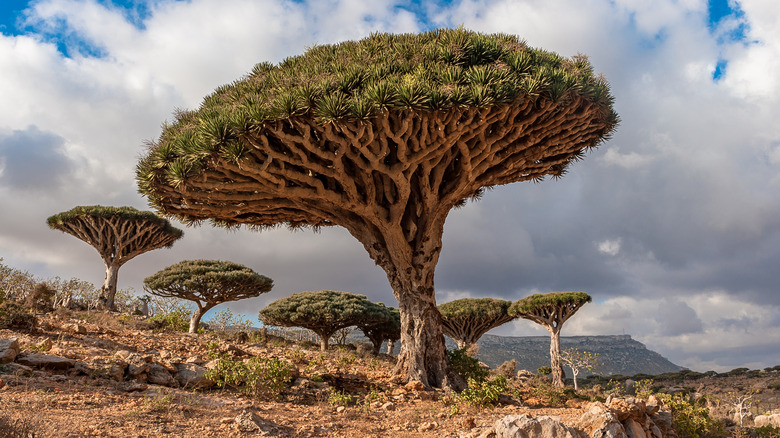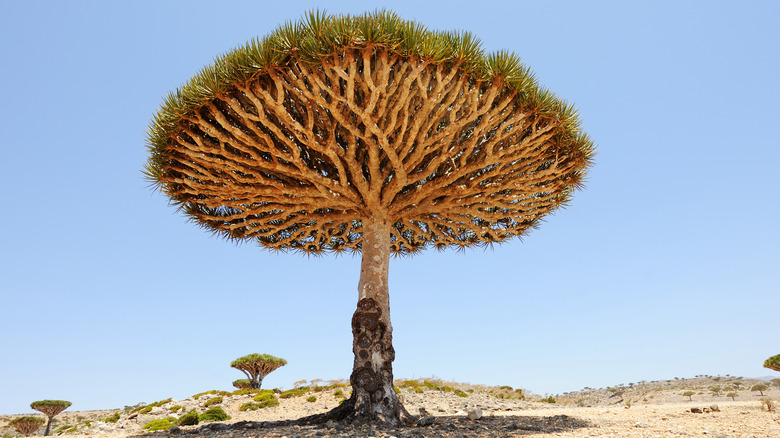This Tree In Yemen Has One Incredibly Unique Characteristic
Some of the most magnificent features of our planet are not restricted to the Seven Wonders of the Natural World. There are plenty of mesmerizing and fascinating little adornments in Mother Nature's crown that reside in some of the more remote crevices of the Earth. However, just because a gem is hidden doesn't mean it doesn't shine. Resting 200 miles off the coast of Yemen, the island of Socotra is one such haven for a few of earth's incognito treasures. In a sense, one might say it's something of a real-life treasure island (via National Geographic).
Socotra is home to the fabled dracaena cinnabari, otherwise known as the dragon blood tree. According to Owlcation, the dragon blood tree has been a spectacle for people within the region for centuries. Per its own namesake, the tree has an interesting attribute that continues to draw the fancy of countless admirers of nature's vast capabilities: It appears to actually bleed.
The dragon blood tree seems to actually bleed
According to legend, the dragon blood tree sprouted from the earth after the blood of a dragon was spilled upon the soil following a heated battle with an elephant. It's probably safe to assume that the story is restricted to allegorical parameters (as far as we know, dragons never actually existed), but the remarkable phenomenon of the tree actually secreting a scarlet, blood-like resin is very much a fact. Much like sap from a maple tree, the dragon blood tree produces the resin when pieces of it are broken off or its bark has been penetrated by something, either deliberately or accidentally (per Owlcation).
Locals of the region have named the resin "emzoloh," and they've taken to using it in various manners, as Global Trees reports. It's often applied as a dye for garments, art, and furniture, but it's also utilized for medicinal purposes as well.
Other uses for the dragons blood tree
According to Global Trees, inhabitants of Yemen often feed the berries produced by the dragon blood tree to cattle and other farm animals. While they can be beneficial to the health of livestock, the berries can also be detrimental if consumed in large amounts. The resin, in addition to the aforementioned uses, can also be utilized to make incense, cosmetics, paint, and is often instrumental in traditional rituals involving alchemy and magic (via Owlcation).
However, if you have pet rats or mice, best keep them far away from the nifty red substance. Scientists have observed that the resin can have negative effects on the little creatures, causing bleeding in rats and damaged gene cells in mice. As to whether or not this kind of adverse reaction can extend to human beings, experts are still unsure, so extensive research and caution is recommended to those venturing into the world of dragon nectar (per Owlcation).


